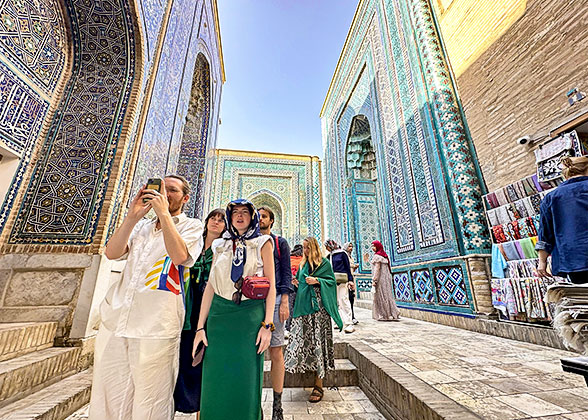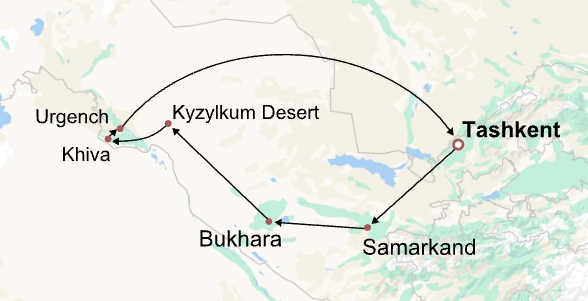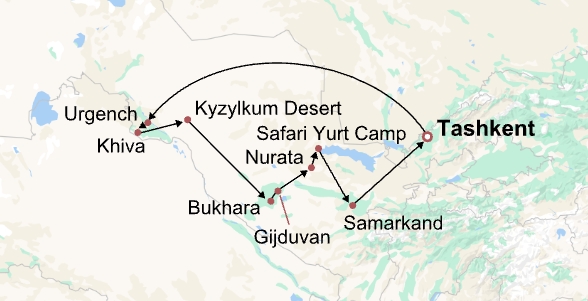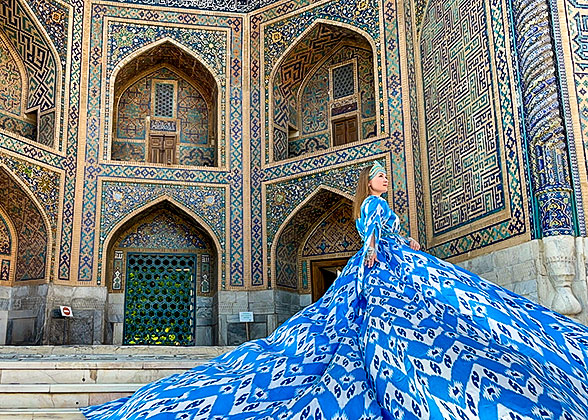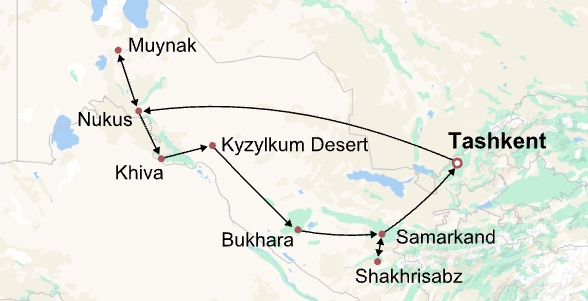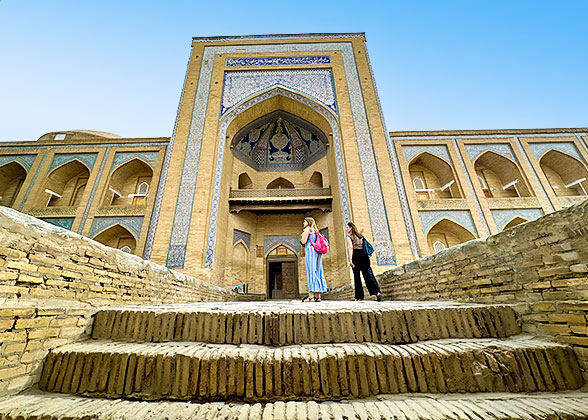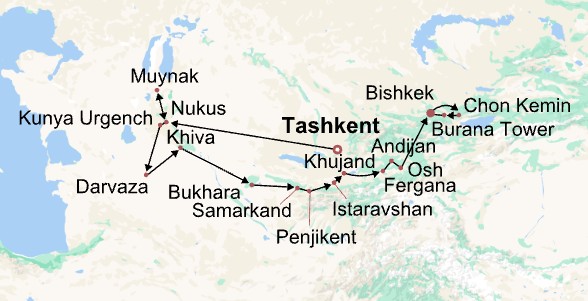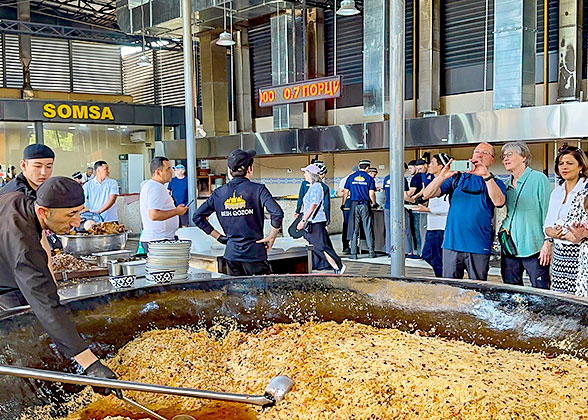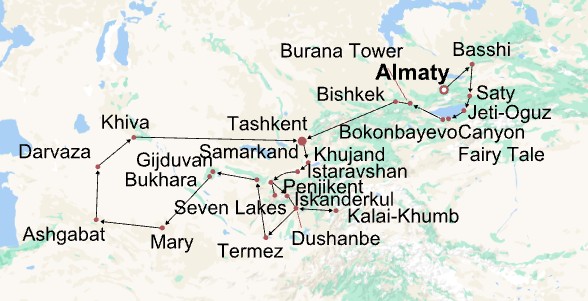What is the best month to visit Uzbekistan?
Spring (April to mid-June) and autumn (September to October) are the golden times to have Uzbekistan tours. Spring offers the most beautiful scenery, when all plants come back to life. It is also a good time to experience traditional Uzbek festivals, such as the Silk and Spices Festival in May. As autumn approaches, the weather is cooling from the scorching summer, and fruits are gradually ripening, providing opportunities to taste the freshest agricultural products.
Summer (late June to August) is the low season, when the spots are less touristy, but the weather is scorching, with the average temperature soaring to 40°C (104℉). Chilling winter with the lowest temperature falling to -23 °C (-73℉) is not suitable for common travelers, but it’s a perfect time for skiing lovers.
How many days do I need for Uzbekistan? What to see for first-time travelers?
Normally, a 6 to 8 days’ Uzbekistan tour is enough for first-time travelers to explore its three most popular cities: Tashkent, Bukhara, and Samarkand. You can feel the charm of the fusion of Russian and Central Asian architecture at Tashkent metro stations, appreciate the Islamic buildings with ostentatious domes of Tamerlane in Samarkand, and explore the old Bukhara quarters to see people's daily life.
If time permits, prolong your Uzbekistan tour to two weeks to visit its first UNESCO World Heritage site, Ichan Kala in Khiva, admire avant-garde artworks hidden in the desert in Nukus, and experience a camel ride in the Kyzyl Kum Desert.
Do I need a visa for Uzbekistan?
For tours of Uzbekistan, most Western visitors, including those from the EU and 66 other countries, like the UK, Australia, New Zealand, and Canada, are eligible for visa-free entry. U.S. citizens under 16 and over 55 enjoy the visa-free policy as well. But other Americans and visitors from 49 countries must apply for an e-visa 1-2 weeks in advance. Please check the official website to confirm whether you are on the visa-exempt list.
How safe is Uzbekistan for tourists?
Yes, it’s quite safe. Uzbekistan is pretty stable, and the crime rate is low. There are always English-speaking police on the streets who are willing to offer assistance to travelers. Although most people are friendly, it is still advised not to hang out in dark alleys alone at night.
How to get to and travel around Uzbekistan?
Tashkent International Airport is the busiest international airport in Uzbekistan. It is easy to find a direct flight to Tashkent from New York, London, and Paris, while 7 domestic airports provide services between all the major cities. Although high-speed trains are also of great help in Uzbekistan tours, connecting most cities, including Bukhara and Samarkand, our private car can escort you to off-radar places, such as Nukus, the Aral Sea, and Termez, where transportation has not developed. Independent travelers can register Yandex Go with an Uzbek SIM card to hail a car.
What is the dress code for tourists in Uzbekistan?
Most residents in Uzbekistan are Muslims. Although it is open in tourist cities, such as Tashkent, Samarkand, and Bukhara, travelers are expected not to wear skirts, shorts, sandals, or tanks when visiting religious buildings, and ladies need to wear headscarves to cover their hair and shoulders.

